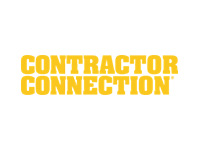Attics are commonly known as mold danger zones. Poor insulation, leaky roofs, and improper ventilation can all ruin your attic.
Most people won’t even visit their attic for months or years. This neglect lets a small mold problem swell into a disaster. Get ahead of issues, and know the signs of attic mold before it’s too late.
Here at IDC, we’ve dealt with mold in every corner of all types of homes. That’s why we’ve compiled this master guide on attic mold. Learn everything you need to know about how and why mold forms and what you can do to keep it at bay.
Pay close attention — you and your wallet will be thanking this article soon!
How to Know if You Have Attic Mold Issues
Knowing how to spot mold is vital to keeping it out of your home. You can’t stop a problem as invasive as mold growth unless you can get ahead of it.
Check your attic for these signs and take immediate action should you encounter any.
Dark Stains
If your attic plywood has discoloration, it is likely not normal wear and tear (since it is a low-activity area). The wood in your attic should never be moist — if your wood looks dark from water damage, mold will soon follow.
Black, brown, orange, or white patches are signs of mold infestation. Mold will appear as either a dark slimy substance or as soft and fuzzy fluff.
All mold needs to grow is a food source, water, and a dark environment. It’s no surprise attics are such mold magnets!
Humid Attic
Venturing into your attic and starting to sweat is a bad sign. Your attic should be as well ventilated and air-conditioned as the rest of your home.
A humid attic is a breeding ground for fungus. Without treatment, the summer months can get out of control.
In the right conditions, mold can grow in as little as 24 hours! That’s why long-term solutions are the only way to keep your attic mold-free.
Scent of Mildew
Your attic should never smell dank, musty, or mildewy. That’s mold’s calling card.
Trust your instincts — a rank scent needs attention ASAP. If the smell is extremely revolting, wear a face mask in your attic, as the spores will enter your lungs.
Snow and Frost
Most homeowners only consider the summer months when worrying about mold, thinking that winter will kill any bacteria. This misconception is dangerous.
Snow and ice that lingers on your roof can slowly drip through minuscule cracks. A roof that freezes and thaws also expands and contracts and leads to holes.
Snow melts inundate your home with moisture and cause winter mold.
Soaked Insulation
The worst-case scenario for an attic is wet insulation. Wet insulation does not insulate. It is a major red flag for any attic and requires remediation quickly to prevent further damage.
Attics with blown-in insulation are particularly vulnerable. Next to fiberglass, cellulose is the second most common insulation in attics. It’s green, non-toxic, and affordable.
Unfortunately, it’s also mold’s favorite snack.
Not only will mold grow on the insulation material, but your home also no longer has protection against spreading spores.
Mold may fly into the vents and end up in your kitchen, bedroom, and bathroom!

How to Get Rid of Mold in the Attic: Step-by-Step
Exposing yourself to mold in your attic can be dangerous and potentially quite harmful. Make sure you have proper clothing and gear before getting started.
Wear an N-95 mask or similar and wear clothes you don’t mind throwing out (or a disposable jumpsuit). Have a box van circulating air at all times while you work.
DIY mold removal should be for treating wood only. Do not work with moldy insulation on your own. Insulation is dangerous, and only professionals can handle the chemicals and fiberglass safely.
Remove Wet Surfaces
Your best bet is to use a wet vacuum that can quickly suck up all the dirty water. Only trust a vacuum that is HEPA certified. This certification guarantees that the filter removes all the harmful fungus particulates. Discard all the filled bags after use.
If you do not have a shop vac or similar, use disposable towels or sponges.
Sanitize the Whole Attic
It is essential to clean all areas of the attic beyond the visibly affected zones. The microscopic spores can settle down and grow unseen.
You can use an off-the-shelf cleaning product or create a solution out of materials you probably already have in the house.
Mix water, vinegar, and tea tree oil together. Place it in a spray bottle, and apply to affected areas. This solution has natural fungicidal properties and is 100% organic.
Mixing bleach and water will also sanitize the affected areas but may cause uncomfortable and harmful fumes.
Fully Dry the Attic
Once the attic is clean, it must dry thoroughly to prevent further growth. If there are any windows, open them to allow in a cross breeze. Use a box fan to encourage circulation.
It may take up to 24 hours until the attic is fully dry.
If you live in a humid climate, close the windows and turn up your air conditioning to create dry conditions.
How to Prevent Mold in the Attic
Long-term prevention is the smartest thing a homeowner can do to protect their property and health from a mold invasion.
Home remedies may mask the smell and hide the problem but are rarely bulletproof.
Take the following steps to ensure no water or mold will ever enter your attic again.
Replace Insulation
A poorly insulated attic is not only dangerous but bleeds energy, costing you money. When mold infects your insulation, it is too late to clean it.
Wet insulation does not insulate your home is a breeding ground for spores. Have a professional come in to refurbish your insulation with the latest material.
New Air Tight Seal
With air seals, you should start big, then go small. Locate the most significant holes first and cover them before caulking the edges.
Often you will require a roofing expert to ensure a tight seal. Roofing is not a job for the weekend warrior. If you are serious about preventing water from getting into your home, always consult a licensed professional.
Think beyond roofs too! Walls can be dangerous air dumps. Take out your glasses and scour every inch before sealing up any holes you can find.
Upgrade Ventilation
Is your HVAC system connected to your attic? If mold is a problem in your home, it might be time to make sure HVAC is pumping into your attic.
When you allow your attic to get hot and humid, it makes your whole HVAC system work harder to compensate for a room in your home that pumps warmth into all other areas.
A solar-powered attic fan is a relatively new invention that circulates attic air without adding to your electricity bill.
Mold hates dry and cold — find a way to create those conditions and prevent it from coming back.
Yearly Inspections
Most homeowners will miss the early signs of mildew. You might put a bucket under a drip to collect water from a small hole and think that’s enough.
A trained inspector knows that is a bad idea! Call in a mold expert from IDC once a year to give your entire home a thorough sweep for any mold or potential mold-causing issues.
Professional Remediation
IDC gives this option our highest recommendation. Total remediation involves taking down walls and finding all hidden areas where mold hides. This invasive procedure is the only solution to a severe mold infestation.
Abrasive blasting destroys mold on sight. This procedure is something only experienced experts should perform, but it is a fast and safe way to remove mold at the source.
No trace of fungus will remain after the remediation process. Leaving even a tiny bit of mold allows it to propagate and spread to new areas of the home. But when it’s stopped at the source, you’re free!
It takes an expert with professional-grade equipment to access those hard-to-reach areas. Call IDC to experience the ultimate in mold removal and prevention.
Conclusion
IDC is standing by to tend to all your attic mold issues. With nearly two decades of experience in the industry, we are qualified to handle mold removal and remediation.
We are a family business that values close communication with every one of our clients. You aren’t just a number in our book, but a new friend! That’s why we guarantee you’ll have one single point of contact during the project from start to finish. Your guide will answer all your questions and put your mind at ease.
If you have attic mold, you can’t afford to wait any longer — call today and get the clean home you deserve!













